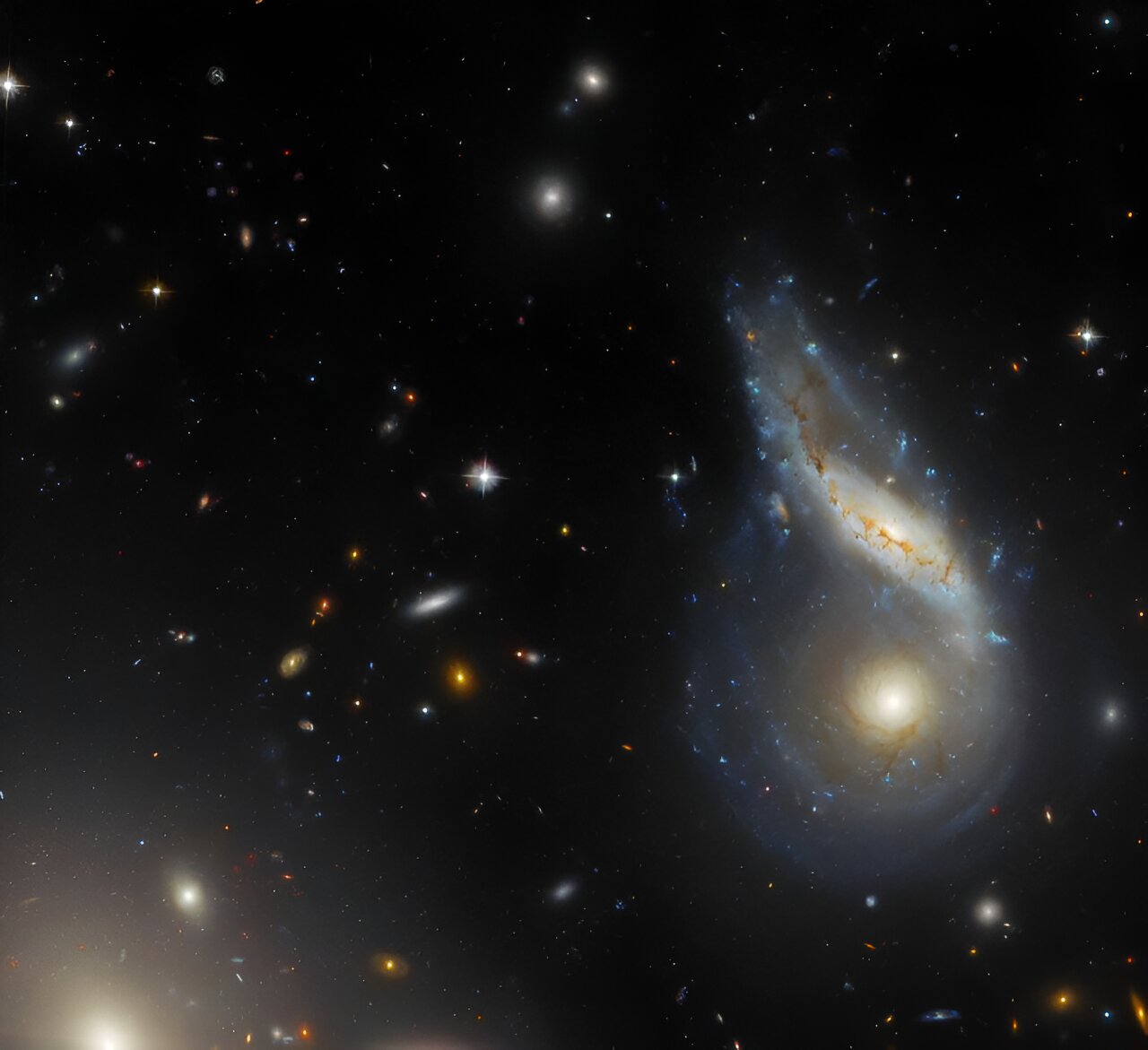The Hubble Space Telescope, humanity’s tireless eye on the cosmos, has yet again unveiled a captivating celestial wonder. This time, the spotlight falls on UGC 5829, a testament to the remarkable diversity of galactic forms. Earning its evocative nickname – the Spider Galaxy – this celestial beauty resides roughly 30 million light-years away, beckoning us to unravel its secrets.
A Galaxy Unlike Any Other: Unveiling the Spider’s Morphology
UGC 5829 falls under the classification of irregular galaxies. Unlike their more structured spiral or elliptical brethren, irregular galaxies defy rigid definitions, exhibiting a chaotic and captivating asymmetry. Despite its relative faintness, making it a less-studied resident of the universe, UGC 5829’s unique morphology has captured the imagination of astronomers, earning it a memorable moniker. The resemblance to its namesake is undeniable – the galaxy’s distorted arms, adorned with vibrant pink nebulae, evoke the image of a colossal spider outstretched across the cosmic canvas.
A Multi-faceted Investigation: Unveiling the Secrets Woven Within the Spider’s Web
The breathtaking image we see is a culmination of data gathered from two distinct Hubble observing programs. The first program, leveraging the power of Hubble’s Advanced Camera for Surveys (ACS), focused on relatively nearby galaxies like UGC 5829. This program aimed to create a comprehensive census of stellar populations within various galaxies. By meticulously studying the relationship between a star’s color and brightness, astronomers can glean crucial information about a star’s age, temperature, and composition. Each observation in this program took roughly 95 minutes, equivalent to a single Hubble orbit. This meticulous data collection has become an invaluable resource for astronomers, providing insights into the types of stars found within different galactic environments.

The second program contributing to this image involved Hubble’s Wide Field Camera 3 (WFC3). This program specifically targeted star clusters within dwarf galaxies, a category that includes UGC 5829. WFC3 boasts exceptional capabilities, encompassing both ultraviolet sensitivity and high-resolution imaging. This unique combination allowed scientists to delve deeper into the star formation processes within these galaxies. The bright pink nebulae scattered across the image represent the nurseries where new stars are born within UGC 5829. These stellar nurseries, brimming with gas and dust, are the cradles of future suns, forever altering the fabric of the Spider Galaxy.
Hubble’s observations not only provide a captivating visual of the Spider Galaxy but also offer a treasure trove of scientific data. By studying galaxies like UGC 5829, astronomers can gain a better understanding of galactic evolution, star formation, and the diverse morphologies of galaxies within our vast universe. This newfound knowledge paves the way for future discoveries, helping us unravel the grand narrative of our cosmic existence. The Spider Galaxy serves as a reminder of the wonders that lie hidden within the universe, waiting to be unraveled by our unwavering curiosity and ever-evolving technology.



















